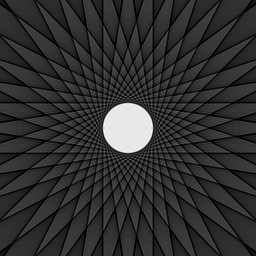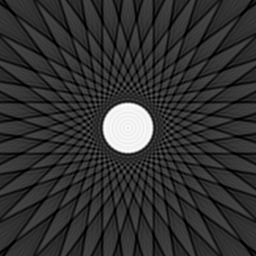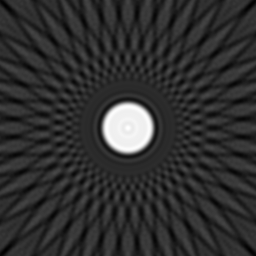
Numerical Reconstruction of semi-transparent objects in Optical Diffraction Tomography
Asma Jebali
Micro-engineering
Diploma Project
February 2002
Abstract
Optical Diffraction Tomography (ODT) is a novel imaging technique, in which the complex refractive index distribution of semi-transparent objects is reconstructed digitally from scattered field data. The object is illuminated by a plane electromagnetic wave propagating for various directions by rotating the object around its vertical axis. For each angle, the intensity distribution of the interference between the total field and the incident field is recorded on planar captors at a certain distance from the object. ODT differs from conventional X-ray Tomography by the fact that it does not provide solely the field's intensity but also its phase. Technically, due to the scattering, the data is no more backprojected along straight lines, it is now backpropagated.
The purpose of this project is to reconstruct such diffracted data. Therefore, we have developed a new backpropagation algorithm based on the inverse Fresnel transform and the filtered backprojection technique. The algorithm is made of three main parts: the data acquisition, the complex filtering and the backprojection. The data acquisition consists in collecting the diffracted projections in sinograms, where each column corresponds to one angle of incidence. These projections are filtered in one dimension in the Fourier space using the FFT. The implemented filter is the combination of the CT ramp filter (RamLak) and the Fresnel kernel for the propagation. The filtered sinograms are then backprojected and summed over the views to reconstruct the real and imaginary parts of the object.
A complete theoretical study of the forward and the inverse problems was presented: we first start with the wave equation that we approximate with the First Order Born Approximation in order to prove the Fourier Diffraction Theorem (FDT) and finally derive the Fresnel Filtered backpropagation algorithm.
To evaluate our inversion algorithm, we computed a test image, a cylindrical object with a circular cross-section, whose exact scattered field was calculated thanks to the FDT. The simulations were made with the experimental parameters that were used within the associated semester project. Since, the algorithm was implemented in C, we can, easily integrate it on a LabView interface in order to interact with the experiment and reconstruct the measured data in place. The simulated results are in good agreement with the preliminary experimental results.
A reconstructed slice of a fiber with 20 views (Core diameter = 0.125mm) |
 |
 |
||
| d = 5 mm | d = 10 mm | d = 20 mm |
Résumé
La tomographie par diffraction optique (ODT) est une méthode innovatrice d'imagerie où l'on reconstruit numériquement la distribution d'indice de réfraction complexe d'objets semi-transparents à partir du champ diffracté. L'objet, illuminé par un faisceau de lumière cohérente, est tourné autour de son axe de révolution pour obtenir différentes vues. Pour chaque angle, l'interférence entre le champ diffracté et le champ de référence est enregistrée à une certaine distance de l'objet. L'ODT diffère de la tomographie à rayons X par le fait que l'on ne mesure pas seulement l'intensité du champ mais aussi sa phase. A cause de la diffraction, les données enregistrées ne sont plus en mesure d'être rétro-projetées le long d'une ligne mais sont, dans ce cas, rétro-propagées.
Le but de ce projet est de reconstruire numériquement de telles données. Pour ce faire, on a développé un algorithme de rétro-propagation basée sur la transformée de Fresnel inverse et la rétro-projection filtrée. L'algorithme est constitué de trois parties importantes: l'acquisition des données, le filtrage complexe et la rétro-projection. L'acquisition des données consiste à stocker les projections diffractées sur des sinogrammes, où chaque colonne correspond à un angle d'incidence. Ces projections sont filtrées en une dimension dans le domaine de Fourier. Le filtre implémenté est une combinaison du filtre rampe (RamLak) utilisé en tomographie classique et du noyau de la transformée de Fresnel. Une fois filtrés, les sinogrammes sont rétro-projetés et sommés sur tous les angles pour reconstruire les parties réelle et imaginaire de l'objet.
Une étude théorique complète du problème (direct et inverse) a été effectuée : le point de départ étant l'équation d'onde à laquelle on applique l'approximation de Born du premier ordre pour démontrer le théorème de Fourier pour la diffraction (FDT) et déduire l'algorithme de Fresnel pour la rétro-propagation filtrée.
Pour évaluer notre algorithme, on a créé une image-test d'un objet à section circulaire dont les projections diffractées sont exactement calculées grâce au FDT. Les simulations sont effectuées en utilisant les paramètres expérimentaux du travail de semestre associé. Les résultats des simulations correspondent bien aux premiers résultats expérimentaux. L'implémentation en C de l'algorithme nous permet de l'intégerer sur LabView pour reconstruire directement l'objet.